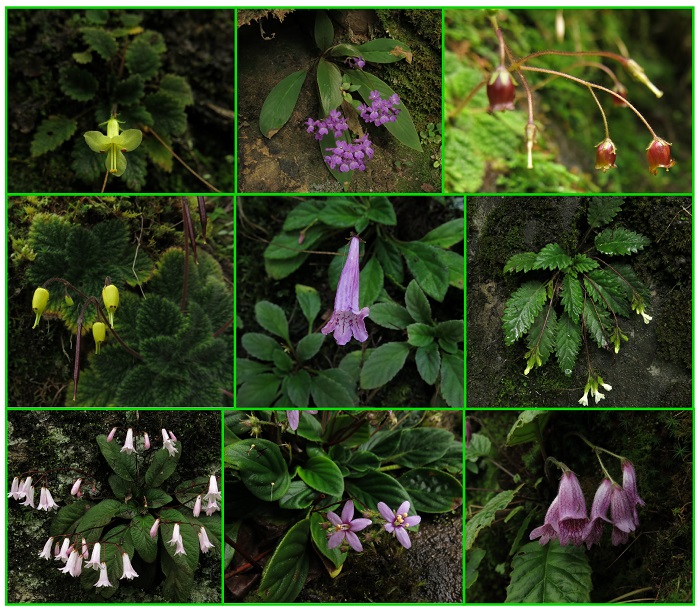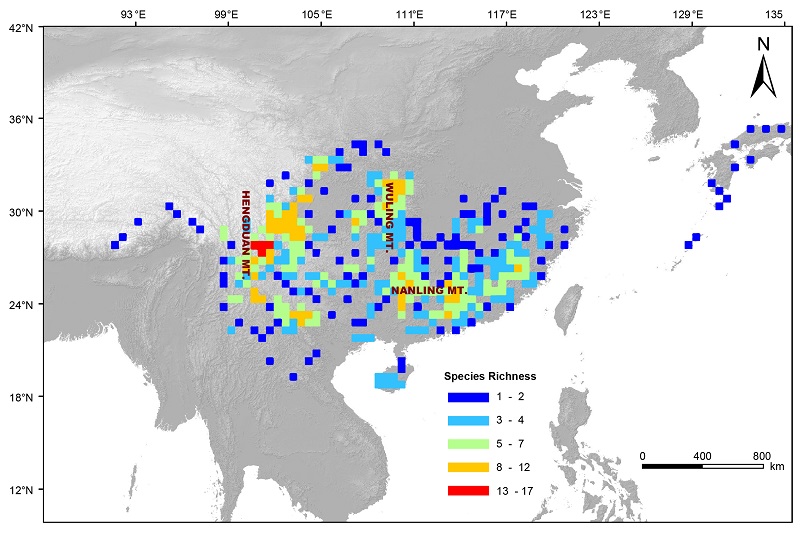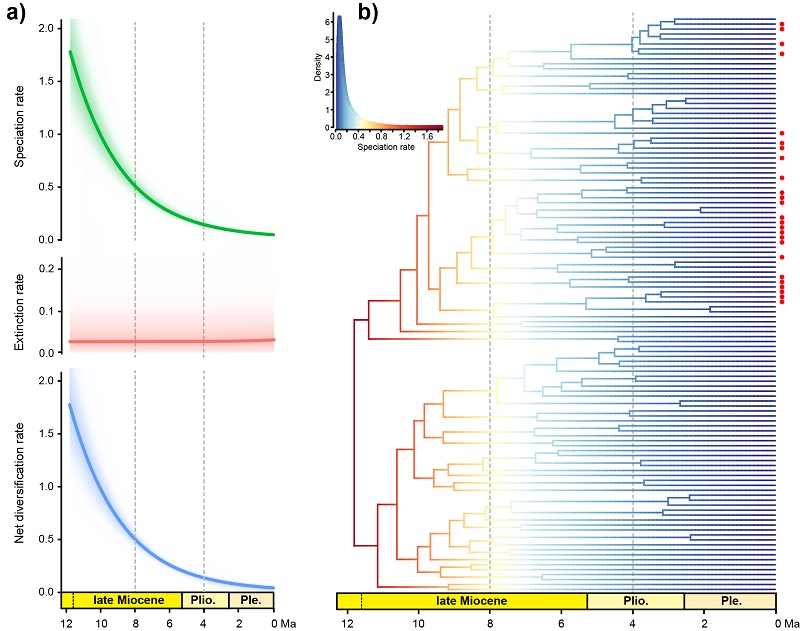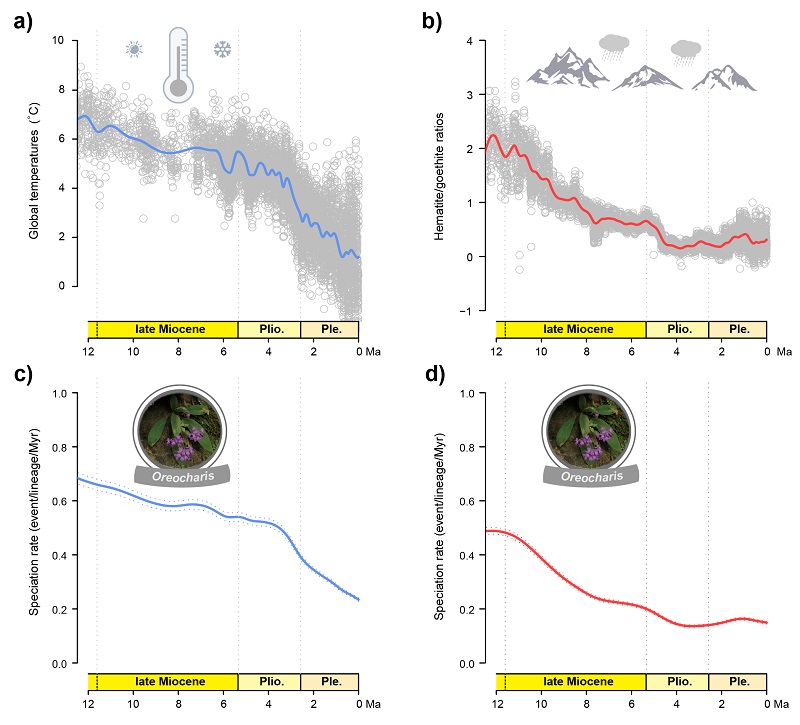

Mountain systems harbor a substantial fraction of global biodiversity and provide excellent opportunities to study rapid diversification and to understand the historical processes underlying the assembly of biodiversity hotspots. The rich biodiversity in mountains is widely regarded as having arisen under the influence of geological and climatic processes as well as the complex interactions among them. However, the relative contribution of geology and climate in driving species radiation is seldom explored.
The scientists in Prof. Kang’s group from SCBG studied the evolutionary radiation of Oreocharis (Gesneriaceae), which had very high morphological diversity (Fig. 1) and three centers of diversity and diversified extensively throughout East Asia, especially within the Hengduan Mountains (HDM) (Fig. 2), using 123 transcriptomic data and a time calibrated phylogeny for 88% (111/126) of all species of the genus. In particular, the scientists applied phylogenetic reconstructions to evaluate the extent of incomplete lineage sorting accompanying the early and rapid radiation in the genus. They also fit macroevolutionary models to explore its spatial and diversification dynamics in Oreocharis and applied explicit birth-death models to investigate the effects of past environmental changes on its diversification.
Evidence from 574 orthologous loci suggest that Oreocharis underwent an impressive early burst of speciation starting ca. 12 Ma in the Miocene, followed by a drastic decline in speciation toward the present (Fig. 3). Although they found no evidence for a shift in diversification rate across the phylogeny of Oreocharis, the results showed a difference in diversification dynamics between the HDM and non-HDM lineages, with higher diversification rates in the HDM. The diversification dynamic of Oreocharis is most likely positively associated with temperature-dependent speciation and dependency on the Asian monsoons (Fig. 4). The scientists suggest that the warm and humid climate of the mid-Miocene was probably the primary driver of the rapid diversification in Oreocharis, while mountain building of the HDM might have indirectly affected species diversification of the HDM lineage. This study highlights the importance of past climatic changes, combined with mountain building, in creating strong environmental heterogeneity and driving diversification of mountain plants, and suggests that the biodiversity in the HDM cannot directly be attributed to mountain uplift, contrary to many recent speculations. Future studies may investigate whether the diversification patterns identified here are mirrored by patterns in other plant lineages and/or in other mountain systems.
The study was conceived and designed by Prof. Ming Kang (Southern China Botanical Garden, CAS), accomplished by Dr. Hanghui Kong from SCBG, Dr. Fabien Condamine from CNRS, Dr. Lihua Yang, Dr. AJ Harris, Dr. Chao Feng from SCBG, and Dr. Fang Wen from GIB. This work was financially supported by grants from the Strategic Priority Research Program of Chinese Academy of Sciences (XDB31000000) and the National Natural Science Foundation of China (31970231). The results have been recently published in Systematic Biology.(https://doi.org/10.1093/sysbio/syab068)

Fig. 1 Representative species of Oreocharis, showing their strongly divergent floral characters, especially corolla shape and coloration

Fig. 2 Species richness pattern of Oreocharis

Fig. 3 Diversification dynamic patterns of Oreocharis.
a) Temporal variation in speciation, extinction, and net diversification rates inferred with BAMM.
b) Maximum a posteriori probability shift configuration represented as a phylorate plot showing variation in speciation rates across the phylogeny of Oreocharis.
The species distributed in HDM are noted with red dots.

Fig. 4 Macroevolutionary patterns of Oreocharis.
a), b) Past fluctuations of temperatures and East Asian monsoons since the late Miocene.
c), d) Speciation rates through time for Oreocharis obtained from the relationship between speciation rate and paleotemperatures and East Asian monsoons.

